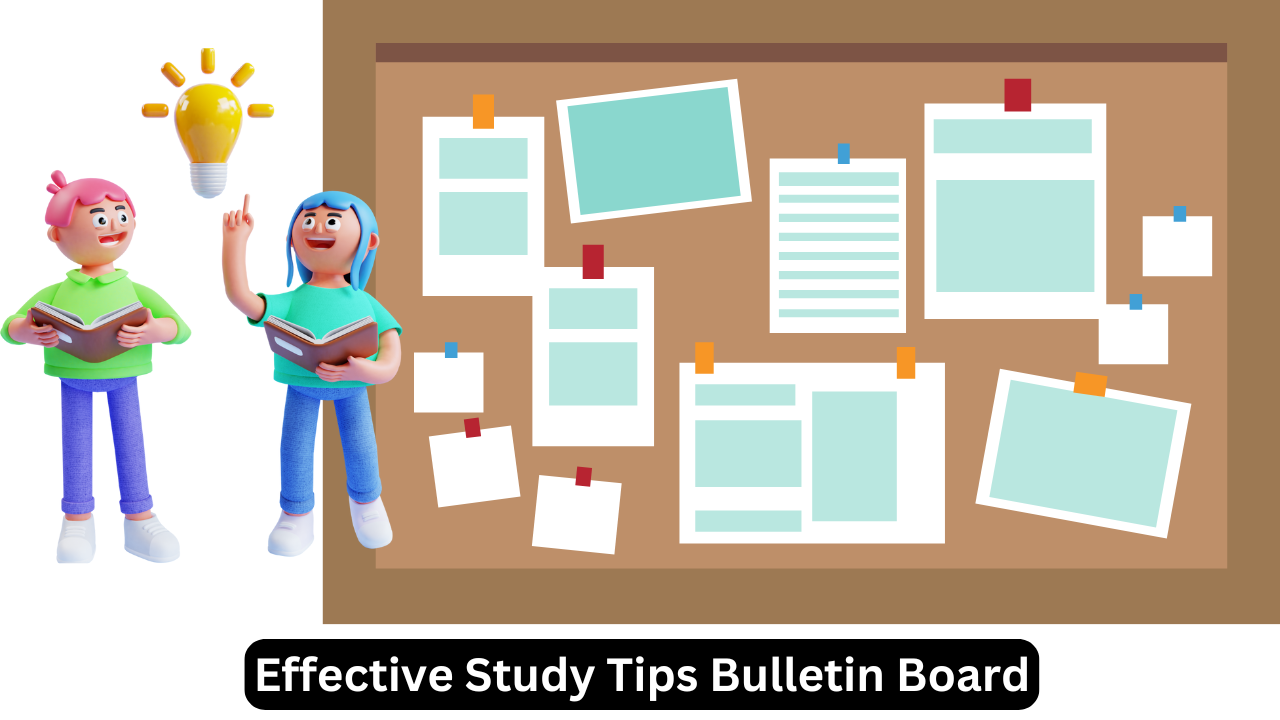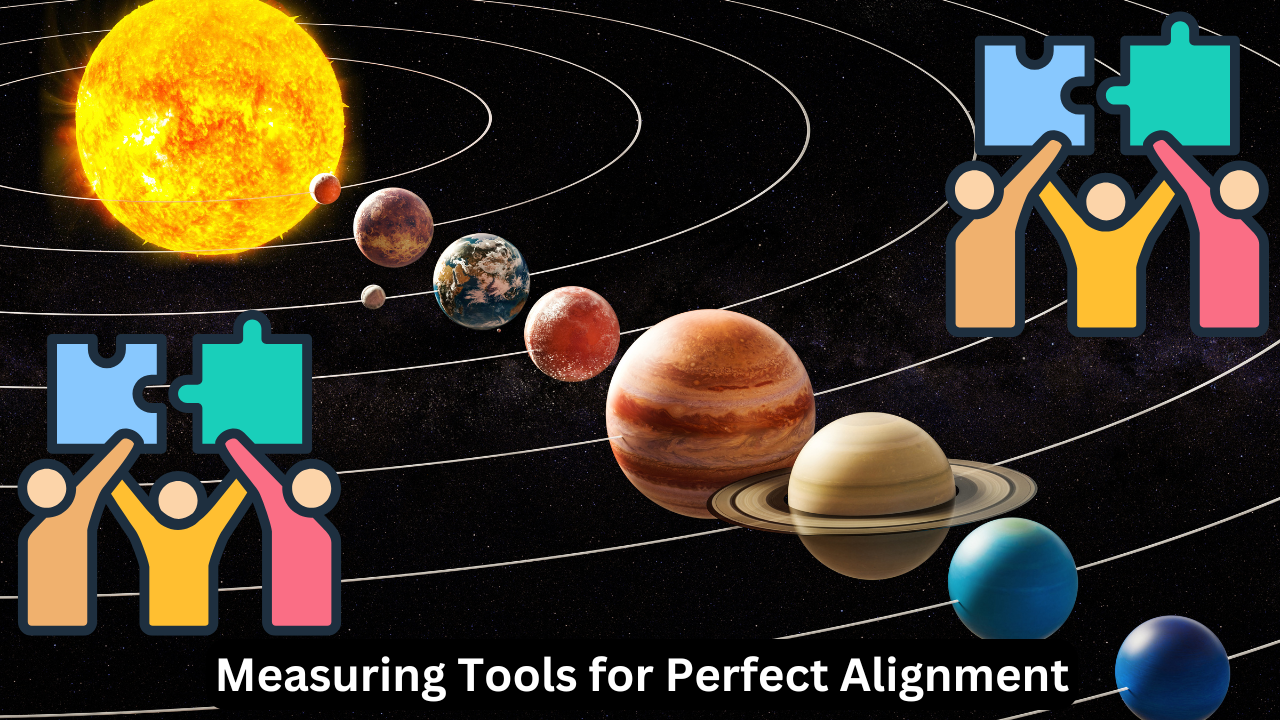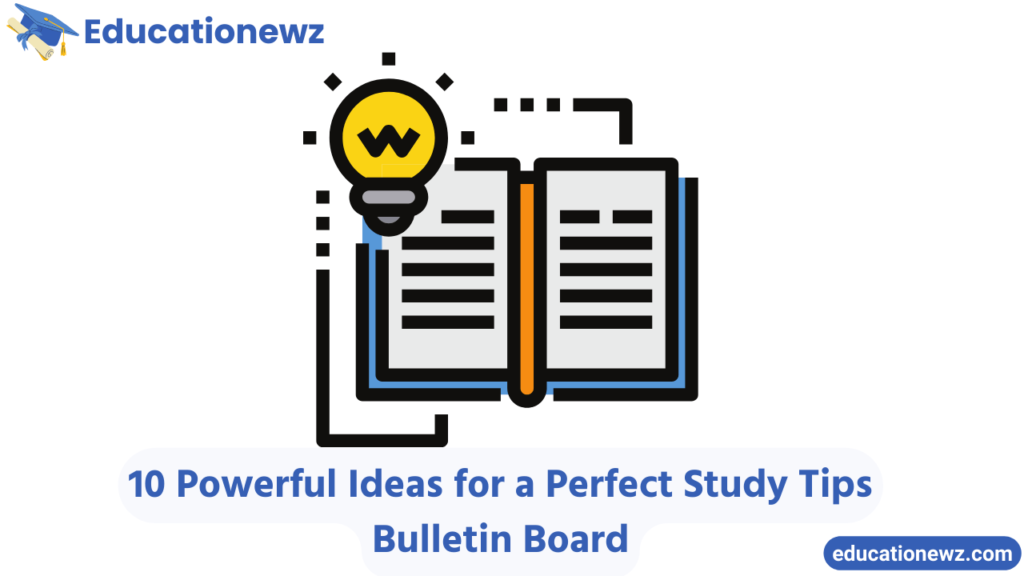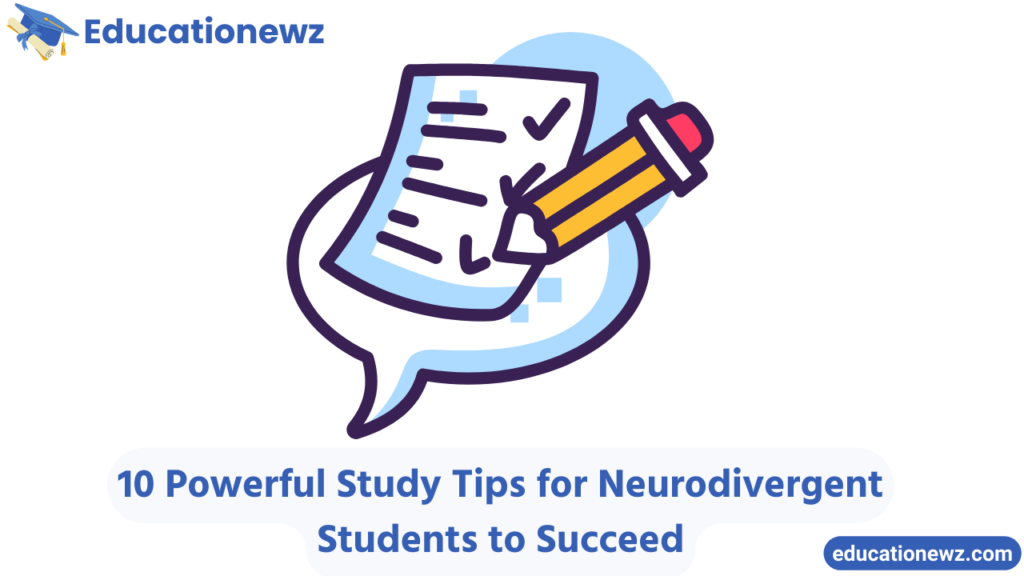A Study Tips Bulletin Board offers a practical and visually engaging way to organize study strategies, keep students motivated, and promote better academic habits.
In a learning environment, visual aids and organizational tools can significantly impact students’ engagement and retention. A well-designed study tips bulletin board serves as an invaluable resource, promoting productivity and enhancing classroom aesthetics. Teachers and students alike benefit from a bulletin board that offers clear, visually appealing study tips, helping keep track of academic priorities and offering daily inspiration. In this article, we’ll cover strategies and creative ideas to optimize a study bulletin board, transforming it into an effective tool for enhancing learning outcomes. Whether you’re an educator looking to make your classroom vibrant or a student aiming for a productive study space, this guide is designed to inspire you to create a compelling and purposeful bulletin board.
The Benefits of a Study Tips Bulletin Board
A study tips bulletin board can serve many purposes beyond decoration. When organized with intention, it becomes a center for resources, a reminder board, and a motivation space. Here are a few reasons why this tool is invaluable in any learning environment:
- Improved Organization: A bulletin board organizes information, allowing students to find essential study tips and academic reminders in one place.
- Enhanced Memory Retention: Visual aids reinforce learning. When students see study tips regularly, they’re more likely to recall and apply them.
- Boosts Motivation: A colorful, organized bulletin board adds energy to a space, encouraging students to take study tips seriously and incorporate them into their routines.
- Promotes Self-Discipline: With a dedicated spot for study resources, students build habits around productivity, goal-setting, and time management.
Tips for Creating an Effective Study Tips Bulletin Board

To ensure that your study tips bulletin board is both functional and aesthetically pleasing, follow these tips. A cohesive and visually appealing board can inspire students and make learning environments feel more dynamic.
1. Consistent Background Colors for Visual Clarity
When setting up a bulletin board, background color choice is essential. Using a consistent color theme helps create a balanced, organized appearance. Select colors that are visually pleasing but not overwhelming. Try limiting yourself to one or two colors that align with the overall aesthetic of your learning space. Neutral colors, like beige or gray, create a subtle backdrop that makes colorful study materials pop, while light shades of blue or green can evoke a calming effect.
2. Use Coordinated Borders for Clean and Cohesive Design
Bulletin board borders give a neat frame to your display and help define sections. To avoid a cluttered look, choose one border style and color, applying it consistently. Simple border designs enhance readability, making it easier for students to focus on the study tips displayed. You can purchase inexpensive borders from craft stores and layer them for added visual interest without overwhelming the board’s main content.
3. Pin, Then Staple: A Trick for a Smooth Surface
For a professional, wrinkle-free bulletin board surface, try pinning paper before stapling it down. Place push pins along the edges and leave them overnight to allow the paper to adjust. This minimizes any bubbling or sagging after stapling. A smooth surface is particularly helpful when you’re displaying materials that need to stay wrinkle-free and flat for readability, like study schedules or step-by-step guides for complex subjects.
4. Use Push Pins to Arrange Items Before Committing
When arranging items on a bulletin board, push pins allow easy adjustments. By pinning items first, you can experiment with placement and spacing, ensuring a balanced layout. This method also helps prevent damage to your materials, as staples can leave visible holes if repositioned multiple times. Aligning study tips and other resources carefully ensures clarity and makes the board easy to navigate.
5. Measuring Tools for Perfect Alignment

A well-organized bulletin board relies on symmetry and alignment. Using a ruler or level helps keep materials evenly spaced, creating a polished appearance. With precise alignment, you enhance readability and make it easier for students to scan and locate information. For example, placing study tips in a straight line across the board adds a sense of order and guides the viewer’s eye.
Creative Study Tips Bulletin Board Ideas
Once you’ve set up the board with the basics, try these creative ideas to make your study tips bulletin board more engaging.
1. Incorporate Scrapbook Paper for Texture and Visual Appeal
Scrapbook paper adds texture and color, allowing you to personalize each section of your bulletin board. Use various colors to denote different categories, like study skills, subject-specific tips, or inspirational quotes. Scrapbook paper can serve as the background for a particular section or border for featured study tips, making the board feel more vibrant and inviting.
2. Add Titles for Clear Organization
Every section of your bulletin board should have a title, making it easier for students to find what they need. For example, label sections like “Time Management Tips,” “Study Strategies,” or “Weekly Goals.” Titles can be created with cut-out letters from an electronic die cutter, or printed in bold fonts and trimmed by hand. A well-titled bulletin board guides students, encouraging them to spend time absorbing the study tips presented.
3. Use Cabinets and Alternative Spaces for Expansion
If you’re short on wall space, make use of cabinets or nearby shelving. For example, the sides of a cabinet can serve as a mini extension of the bulletin board, perfect for quick-reference tips like grammar rules or vocabulary words. This strategy maximizes your available space and offers additional opportunities to incorporate study tips in unexpected ways.
4. Incorporate Interactive Elements
Interactive boards invite students to actively engage with study tips. For example, include a small whiteboard section where students can write down their weekly goals or add sticky notes with their favorite study techniques. This participation keeps the content fresh and relevant, encouraging students to connect with the material.
5. Display Student Work and Achievements

Showcasing student accomplishments adds a personal touch to the bulletin board. Use clothespins to hang completed assignments, creating a visual reminder of their hard work and inspiring others to achieve similar success. When students see their work recognized, it fosters a positive attitude toward studying and creates a collaborative learning environment.
Sample Study Tips Table for a Bulletin Board
Adding a table of common study strategies makes it easy for students to identify techniques that work best for them.
| Study Technique | Description | Best for… |
|---|---|---|
| Pomodoro Technique | Break study time into 25-minute sessions | Improving focus |
| SQ3R Method | Survey, Question, Read, Recite, Review | Enhancing comprehension |
| Mind Mapping | Visualize connections between concepts | Complex subjects |
| Spaced Repetition | Review material over increasing intervals | Long-term retention |
| Active Recall | Test yourself on learned material | Exam preparation |
FAQs about Study Tips Bulletin Boards
Here are some frequently asked questions that may help clarify the purpose and benefits of a study tips bulletin board:
Q1. What is the main purpose of a study tips bulletin board?
A study tips bulletin board provides a centralized place to display study strategies, reminders, and motivational messages, making it easier for students to stay organized and focused on their academic goals.
Q2. How can I make my bulletin board more interactive?
Consider including a small whiteboard section, where students can add personal study goals or write down tips. You could also add a pocket for students to submit their own study advice, encouraging collaborative learning.
Q3. What are some good materials for bulletin boards?
Good materials include colored paper, scrapbook paper, clothespins, push pins, and sturdy borders. You can find affordable materials at most craft stores, which offer a wide variety of colors and patterns.
Q4. How often should I update the study tips bulletin board?
It’s ideal to update the board every few weeks or at the end of each grading period. Fresh content keeps students engaged and ensures the tips remain relevant to current assignments and exams.
Q5. Can I create a digital version of a study tips bulletin board?
Yes! Many educators use online platforms like Google Classroom, Padlet, or Canva to design virtual bulletin boards, which are especially useful for remote learning.
Conclusion
A thoughtfully designed study tips bulletin board is more than a decorative feature; it’s a versatile learning tool that reinforces study habits, builds organization skills, and inspires students daily. By using consistent colors, organized sections, and interactive elements, you can create a space that genuinely enhances academic performance. Whether in a classroom or a home study area, a study tips bulletin board can be tailored to any student’s needs, fostering a positive and productive study environment that supports lifelong learning skills. Please follow our blog Educationewz.



